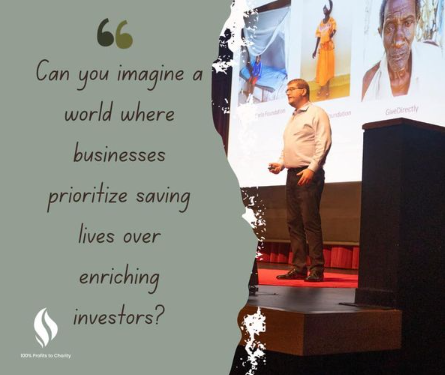Eric Gastfriend is the co-Founder of Harvard University Effective Altruism Student Group. He explains why now is the time to pay attention to effective giving.
Suppose I told you about an investment that would easily generate a 60-fold return in a few years with very little risk. And then I tell you that some of the world’s top economists have looked at the opportunity and agreed with me.
“Impossible,” you might say. “Surely if there were such an obvious source of excess returns, investors would pile in like teenage girls at a Katy Perry concert and the opportunity would disappear faster than O.J. at a crime scene.”
In the stock market, you would be right. Opportunities for 60-fold returns do exist but they cannot be obvious – the system should bring the prices of stocks into equilibrium so that their expected risk-adjusted return on investments (ROIs) are roughly even. But the investment I’m talking about isn’t in the stock market – it’s nutrition programs in the developing world aimed at preventing stunting, i.e. feeding kids vitamins (think Flintstones or Gummy Bears, your choice).
According to the Copenhagen Consensus, a think tank that does cost-benefit analysis and project prioritization, one dollar invested in these programs generates roughly $60 in net present value (NPV). The problem is that the returns come back to society in the form of children who become more productive citizens later in life, rather than coming back to the investor or philanthropist who funded the program.
This causes two problems. One concerns incentives. In philanthropy, since there’s no incentive to maximize returns for ourselves, we are motivated to engage altruistically with the causes we find most emotionally compelling, which may not correlate well with maximizing social ROI.
The second problem is information. Philanthropists don’t get a portfolio statement at the end of the year outlining the impact they achieved. They get letters from the charities they support outlining what the charity did during the year, but usually not describing how those activities translate into life outcomes, and hardly ever measuring the difference between the actual outcome and what would have happened without the philanthropic investment (the counterfactual/causal impact).
This is why the nonprofit sector lacks the equilibrium and rigor of public markets. Not enough people are hunting for altruistic bargains the way we hunt for high ROI investments. In fact, according to a 2010 Hope Consulting survey, two thirds of donors do no research at all, and only three percent research the relative performance of different charities. No wonder the nonprofit sector has a reputation for lacking efficiency – we, their investors, haven’t been imposing it upon them the same way we do for our for-profit investments.
Luckily, there is a huge bright side to this problem. The fact that others are investing suboptimally means that there are massive opportunities to do good in the world that are hiding in plain sight. When Warren Buffett started his investing career in 1950, the stock market was much less sophisticated than it is now, enabling him to make billions of dollars through wise investment decisions and become the most successful investor of all time. I argue that the current non-profit sector is even less sophisticated than the stock market of 1950 — this means that you could easily be the Warren Buffett of social investing!
Where to start? First, you’ll need to consult the research of the best analysts. GiveWell, a charity evaluator, has researched hundreds of charities and evaluates them on evidence of impact, cost-effectiveness, room for more funding, and transparency. Their top charity, Against Malaria Foundation, delivers insecticide-treated bednets in sub-Saharan Africa to prevent Malaria, at an estimated cost of roughly $3,000 per life saved. Their other top-rated charities offer similarly amazing bargains for improving the human condition.
Next, we need a theoretical framework for social investing, similar to the Capital Asset Pricing Model (CAPM) in for-profit finance, but to help us think about do-goodery in a rigorous and analytical way. Effective altruism (EA) is a growing body of thought on how we can accomplish the most good for the world given our limited time, energy, resources, and money. It applies the philosophy of ethics and epistemology to real-world questions such as which careers do the most good or where we should donate.
Just as behavioral investing techniques look to the work of behavioral economists such as Daniel Kahneman to guard against our built-in emotional biases and to act more rationally, so too does Effective Altruism seek to incorporate those lessons, especially since altruism is a much more emotional activity to begin with. There are a growing number of organizations, blogs and forums approaching the world’s problems from this perspective; I recommend getting on the email lists of organizations such as GiveWell, Giving What We Can, and The Life You Can Save as an easy way to learn more.
Finally, we need a community. The Effective Altruism Forum is a great place to share and discuss ideas, and it uses reddit-style upvoting to make sure the most insightful comments rise to the top. You may be surprised by how others with similar goals (i.e., to improve the world as much as possible) reach wildly different conclusions about how best to accomplish them, but exploring those differences openly and honestly is what makes the EA community a joy to be a part of! For in-person interactions, The Life You Can Save maintains a list of local EA groups in many major cities around the world, as does the Effective Altruism Hub. Regardless of what you think of the Effective Altruism approach, I hope you’ll agree that there are massive opportunities for us to do good for the world – and you could be the one who finds them.



